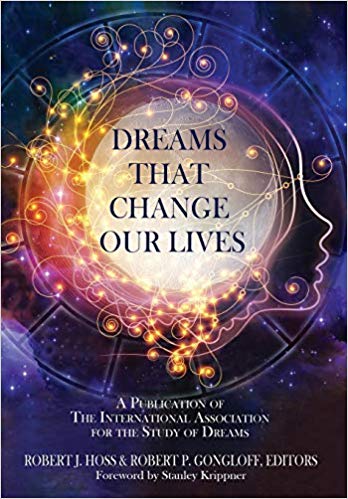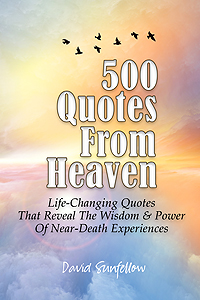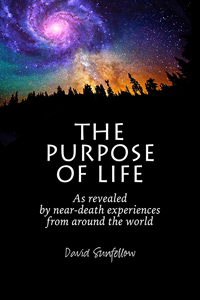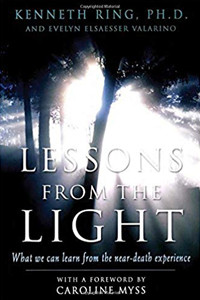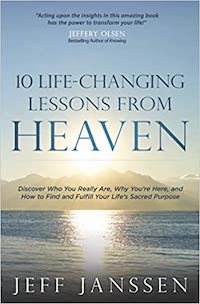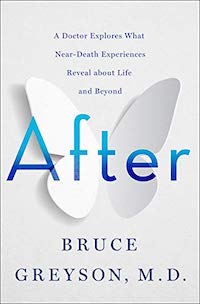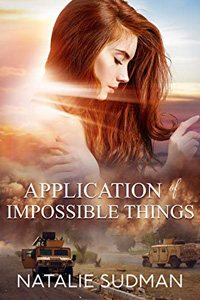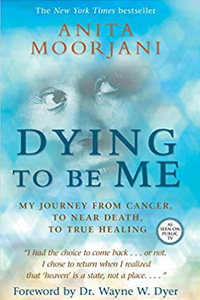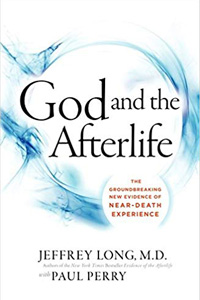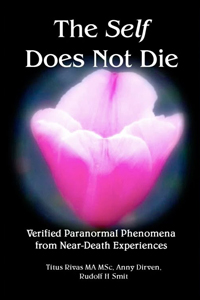![]()

Robert Waggoner Interviews Robert J. Hoss
LDE (Lucid Dream Experience) Newsletter
Vol. 8, No. 3, December 2019
Original Link (pdf)
Waggoner: Bob, welcome to the LDE! When did you first learn about lucid dreaming?
Hoss: I actually had periodic lucid dreams as a child and adolescent, which is what lead to a lifetime of interest in dreaming. Often I could influence the direction of my dreams or knew I was dreaming and if I didn’t like the dream would wake myself up — often resulting in false awakenings. I never knew they were a different class of dreams or even that they were called “lucid” until reading about Stephen LaBerge’s research in the ’80s. I didn’t think much about them at the time since I often dreamed that way, but what really piqued my interest was the research over the last couple of decades, much of which was published in your magazine and in various journals, and presented at our International Association for the Study of Dreams (IASD) conferences. The neuroscience made lucidity understandable as a natural dream state, but of particular interest to me was exploring the nature of consciousness through interacting with dream figures and, in particular, what I call the “wisdom behind the dream.”
Waggoner: Did you have immediate success with lucid dreaming, or did it take a while? What happened in your early lucid dreams?
Hoss: I never really tried early on, just waited till they happened. In the very first ones I remember as a child, I was learning to influence a terrifying black storm in the sky that repetitively appeared in my dreams. Having some sense that I was dreaming, I finally faced it and it filled with beautiful colors. From then on, I was excited to see the tornado appear in my dreams and would urge it to come closer and tear things apart.
Most of my lucid dreams as a youth involved having fun, often flying or scaring monsters away or waking myself up if I didn’t like the dream. Later, as a young adult, they would sometimes come when I meditated as I went to sleep. A couple of them resulted in an out-of-body experience. In one, I found myself above a location I perceived was in town a few miles away. It was raining, as I could see the light from a changing stoplight sparkle off the rainy street. Then a dog spotted me floating above and started barking at me. I woke and could hear no rain so was confused since it felt so real — but about half an hour later the storm front with the rain made it to the house.
Like the one above, many of my early lucid dreams seemed to be related to spiritual activities in my life. Back then I was teaching Continuing Education courses at some local universities — one on dream psychology and others on parapsychology research. I was on the research board of the Texas Society for Psychical Research and president of the Texas Parapsychology Association and got so heavily involved in metaphysical and psi experiences that I began to become a bit ungrounded. I had a lucid dream one night that changed all this. It was like a near-death experience (before I even knew what they were).
In the dream, I was arguing with dream figures I recognized as all the parts of myself that were in conflict — and then I became lucid. In frustration I said, “I’m outta here,” and left them all and began to fly through the darkness of space, with mystical music from the Moody Blues playing all around me. I saw a tunnel ahead and knew that if I flew through it into the light I would be on the “other” side in the spiritual realm. With all the intent to do so, I flew toward the tunnel but then a stern voice made me realize that if I went through, I would no longer be alive. I thought about my family and it shook me back to reality, so as I reached the entry I cried out, “Life!” Suddenly all went dark. I cried out even louder, “Wait a minute, I said LIFE!” At that moment I found myself floating on my back at ceiling level above my bed and then falling with a thump into my body. Needless to say, after that experience, I indeed got grounded!
Waggoner: What techniques were you using to become lucid? Which did you find most helpful?
Hoss: Eventually, aside from meditation, I learned to incubate the lucid dreams with intention and envisioning. I must admit I am a bit too lazy to discipline myself except when I need to (usually when I need material for a lecture on dreams), so most of the time I wait for spontaneous occurrences. As I read more about lucid dream induction, however, I began to have some success with techniques used for research. Wake Back to Bed seems to work best for me. I often naturally wake briefly at about 3 or so in the morning, so it is a good opportunity for doing something for about an hour or so then going back to sleep — which sometimes triggers a lucid dream. I have more recently tried Wake Induced Lucid Dreaming — trying to stay conscious while falling asleep. But with me, it is not something I can easily do at will. I have only been able to do it twice. On one occasion recently I was able to enter a lucid dream, then as I woke, I could lull myself back into another lucid dream and was able to achieve it four times in a row.
The fourth one led to a delightful experience. I was floating above an outdoor stadium, which in the dream was part of the venue for our upcoming IASD dream conference that I am managing. The stadium was almost filled. On stage were some of the presenters who were working a dream as if it were a play. It was a colorful, dynamic, and beautiful performance. As it ended, I began to float off feeling really fulfilled, saying to myself out loud, “What creativity, what a wonderful organization to be a part of!”
Waggoner: As you went along, did you have lucid dreams that surprised you? Tell us about those.
Hoss: A couple of the surprising ones were quite hilarious.
I had been regularly testing out an approach for exploring the nature of consciousness which I call the “wisdom behind the dream.” Using a hint from one of Robert Waggoner’s books, I would turn to the dream itself and ask an open-ended question. My question was usually, “Show me something I need to know.” The dreams would most always sparkle into a new lucid dream which would result in a significantly meaningful experience that in some way answered the question.
At one point I had a cluster of lucid dreams over a few days and would immediately ask the question. But I may have “broken my brain” (smile) because on the final night I asked, “Show me something I need to know.” The dream went dark and all I saw was a little hourglass spinning, like on a computer screen, as a voice said, “thinking … thinking … thinking.” I woke laughing.
Another was when I hadn’t had a lucid dream for a while, then one night found myself aware I was dreaming. I was excited and stated my demands to have a beautiful, colorful, magical dream with all sorts of exciting people. Instead, the dream became drably colored with nothing happening and no one around. Finally, a woman appeared. I said, “Who are you?” She stared at me with a scolding look and said, “I am the secretary. I am here to take your orders but if that’s all you want me to do, I can’t be very creative.”
One of the biggest surprises came when I began interacting with dream figures. Dream figures appear to have a mind and ego of their own, some identifying themselves as parts of my personality yet others seemingly separate but associated entities or various states of consciousness. Some would look at me like I was nuts or run away if I asked, “What’s it like to be a dream character?” In one case, they identified themselves as a “higher level of consciousness.”
At first, I saw dream figures as simple thought forms or aspects of my personality, but then one lucid dream changed that. I asked the dream, “Show me something I need to know,” and it sparkled into a dream where I was a professor in a lecture hall with 20 dream figures giving an interactive lecture on lucid dreaming. We were discussing what it was like to be in a dream. Then after what seemed to be 45 minutes, a woman raised her hand and said, “Wait a minute. If I’m just a dream figure, then how come I have a family? I recall a husband and kids and a whole life outside of this room.” Being an interactive session, I turned to the class and said, “Interesting. How many of the rest of you can recall a life before this moment?” Six students instantly raised their hands. Then ever so slowly, all hands went up.
Waggoner: You talked about your earlier experiences being linked to meditation and metaphysical interests. Do you think there is a spiritual aspect to lucid dreaming?
Hoss: I have certainly had some experiences that are difficult to explain without a connection to a spiritual level of consciousness. Some of the most warmly satisfying to me were ones where I experienced what seemed to be a visitation. Writers often talk about how when there is an apparent visitation from a deceased loved one, the dream seems highly lucid, even more real than most lucid dreams. I had two such recent lucid dreams, after my mother passed and after one of my best friends passed. In both dreams, they seemed very “real” and the embrace within each was electrifying.
In the case of my best friend, he and I had an extreme psychic connection ever since we were in high school together, from multiple instances of picking up the phone at the same instant to talk to each other, to various experiments we did later in life (one that scared him so much he refused to do any more). Before he died, we talked about communicating but after he died, a couple months went by with nothing happening; he never even appeared in a regular dream. I even began to doubt the afterlife since if anyone could or would communicate it would be him. Then, on the night of my birthday he appeared in a very vivid lucid dream. He was standing there looking at me with a big grin on his face — and said, “Gotcha.” At that moment we shared how much we missed each other and embraced, and it was like an electric explosion of light and bliss, as if two souls had merged.
Another experience that seems to defy a purely mundane physical explanation is some of the “wisdom” that comes from within the dream, which is way beyond anything I could create cognitively. For example, a loved one is suffering from dementia and now completely depends on me for her care. I have no idea where this is going and what I will need to do to get through it. On the day of this dream, I was severely stressing about all of the unknowns. That night I was dreaming that I was in a marina boatyard filled with old rotting and rusting boats (note: boats in my dreams always relate to my creative journey through life — which is now impacted by the caretaking concern).
Suddenly I realized I was dreaming. I called out to the “wisdom” behind the dream: “Show me what I need to get through this situation.” At that moment, I was lifted up into the cosmos and found myself in a universe of crystal light, which I felt at “one” with and yet somehow still separate. I held up my arms and could see through them, realizing I too was made up of crystal light. Celestial music was consuming everything. I felt an intense BLISS greater than anything I have ever experienced before or could have even imagined experiencing. I dwelled on the pure ecstasy of being absorbed by this sensation, almost forgetting who I was or how I had gotten there. But then I remembered — I had not gotten an answer to my question. So, I called out, “This is really wonderful … but what do I need to get through this situation?” At that moment, tiny three-dimensional red hearts began to appear in the crystal matrix, floating around in a clockwise, circular manner. They formed the outline of a giant red heart in front of me. I could now hear a tune or singing among the celestial music in the background — so I listened carefully. The music gradually increased in amplitude … it was the Beatles singing “All You Need Is Love.” I smiled in amazement; I had my answer, which I immediately knew to be true … having earlier cared for my mother with dementia, I knew Love to be absolutely all I can depend on.
Waggoner: Did lucid dreaming seem to have rules? Or did it seem random and chaotic?
Hoss: No rules per se, certainly not moral rules or “do and don’t” rules, but rather a beautifully loving, flexible, interactive system. Lucid dreams are definitely not random or at all chaotic but the lucid structure seems quite solid, logical, and healthy, and one that often introduces a creative twist with a seeming aim toward the health and wholeness of the dreamer. It is not unlike the process in normal dreams that provides an emotional problem resolution and adaptive learning structure — but in lucid dreams, the ego and conscious mind is present, thus making the interactive learning more immediate and direct.
From a psychological or philosophical basis, lucid dreams appear to be a unique state in which our ego state of consciousness is in direct communication with what Carl Jung called the “collective unconscious.” Imaging research on the state of the brain during lucidity suggests this as well. A combination of what might be considered unconscious processing centers of the brain are observed to remain active in normal Rapid Eye Movement (REM) state dreaming — creating what we experience as a dream. When the dream goes lucid, specific (mainly frontal) areas that provide a sense of ego consciousness (self-reflection) also become active. This creates a unique condition where we can consciously interact directly with the dreaming unconscious centers. We can now interact with and influence a part of our mind that is normally inaccessible to conscious awareness in the waking state.
A couple of seeming “rules” or simply “how it works” that I have noted, are: a) attempts at direct control are limited or ineffective, while intent or expectation and simply asking appears to influence the lucid dream; b) staying lucid depends to a degree on dampening your emotions, so you don’t get so excited you wake yourself up; c) dream figures have a sort of ego of their own, sharing our “gray matter” with capabilities for doing math, using our memory systems and even outwitting the dreamer (which they seem to love to do); d) dream figures respond best when they are honored as separate egos and simply asked a question (who are you, what do you represent, what would you like to tell me, etc.); and e) the “wisdom behind the dream” also seems to respond best to open-ended questions that are emotionally important to you — and the answers seem to be always what is best for you even if you don’t like them.
Waggoner: What was it about lucid dreaming that seems most intriguing to you?
Hoss: By far, it is the ability for direct conscious to unconscious (and collective unconscious) interaction. I consider this to be the true value of lucid dreaming. Whether it be interacting and exploring your dream characters or ultimately connecting with the “wisdom behind the dream” — it is a state of clear participative expanded consciousness that I can’t relate to any other state, except perhaps very deep meditation (but even there the sense of presence is not so immediate).
In my own limited experience, it has allowed me to understand myself in a deeper sense, express feelings that I hadn’t fully expressed, and gain solid wisdom about my life’s direction that I had not achieved in other ways. From the reports of others, it also appears to be a means of mind-over-body and thus physical healing. The potential spiritual aspect is also astonishing. There are a lot of aspects to what I call “the wisdom behind the dream” that certainly appears at times as spirit, a higher self, a divine presence — a sense of oneness with the infinite when fully embracing it.
My first encounter with that higher state was many years ago right out of college and before I even heard the word “lucid.” I was confused about my direction in life and had prayed for guidance. That night I realized I was dreaming and, with the career question in mind, found myself being lifted up into a place of soft white light. It was a strange sensation as I felt at one with an infinite presence but still separate. I considered it to be a higher consciousness, perhaps divine, so I asked this presence that I be led to a career that is meaningful and helpful to others (dream studies was on my mind). I was shown a white plane of all possibilities below me, and me on a path weaving through it, activating probabilities as I went, looking much like a worm aimlessly weaving itself through an apple. Then a voice boomed out, “Okay, but remember — it is not WHAT you do [career] that is important, it is HOW you do it!”
Waggoner: You have done a lot of work on the meaning of “color” in dreams. Have you had any lucid dreams where color played a role? Anything interesting about color in lucid dreams?
Hoss: Laboratory research shows that if we wake subjects up during REM sleep and ask them about color, most all dreams are in color — it’s just that color is something that fades from memory quickly because we don’t pay attention to it. Color in lucid dreams is more memorable, however, likely because it is enhanced and brightened due to the increased activity in those areas of the brain that process imagery and color. My deep curiosity about dream color started when I began teaching dream studies and could find nothing credible regarding dream color; it was all opinion, some culturally based, but with no basis in empirical research. What I found, however, was a good deal of research in the field of color psychology demonstrating how color stimulates the autonomic nervous system and emotions — and that each hue had a different effect. As might be expected, red has an exciting, alerting, and arousal effect stimulating such emotions as desire, passion, drive, achievement and such. On the other hand, blue has a relaxing, calming effect, stimulating such emotions as contentment, fulfillment, affection, introspection and such. All the other hues likewise stimulate different clusters of emotions.
My training in Gestalt Therapy role-play provided me with tools to reveal the emotions pictured within a dream image. When I compared the color psychology research to the role-play results on a colored image, I found that the color psychology results agreed quite well. I realized that the associations one’s brain makes in the waking state are the same as when dreaming. Color, in essence, paints our dreams with emotion. I therefore tabulated the findings from the color psychology studies into a Color Questionnaire for dreamwork and research. The emotional statements are not the “meaning” of color but are designed to trigger one’s own associations. It is available as a download on my website and in my book Dream Language 2nd edition (also available as a download).
The following is an example of how color alone provided the answer to my question in a lucid dream. In waking life, I was stressed to the point of illness, trying to manage the editing of two of our IASD books at the same time. One night I dreamed I was drowning. I realized I was dreaming and cried out to the “wisdom” behind the dream, “Show me the way out of this.” A guide appeared and introduced me to two women and two men who were in conflict. I understood they were conflicted parts of myself, so I asked each, “Who are you?” Both men responded, “I am your grouchy side.” One turned out to be a softy who just acted grouchy, but the other was an angry grouch about ready to explode due to bottled up stress. I told him, “You’ve really got problems you need to fix.”
At that point I flew up in the air with my guide, alarmed that I was so fragmented, and asked him, “Well, what do I need to do to integrate these parts?” I asked him twice, but he wouldn’t answer in words — instead he pointed ahead, sending me flying down a blue hall. I then passed a red hall on the right with black and white paintings at the end that reminded me of a delightfully passionate time when I first began teaching dream studies. I was immediately attracted to it, so turned down the red hall. When I did, the red walls started growing out towards me like the mouth of a monster trying to consume me. I immediately turned to fly back out, terrified, knowing I made a mistake and “I must get back to the blue.”
The dream ended without a literal answer to my question. So, I used the Color Questionnaire. The statement for red that stood out for me was, “I have a driving desire” which I related to my editing the two books, and which was consuming me. When I looked at the blue statements, the one that stood out was, “I need rest, peace, or a chance to recuperate.” The answer to my question was there in the colors alone.
Waggoner: You have developed a wonderful technique for dream interpretation called The Six Magic Questions. Could you briefly explain it? How does it compare or contrast to a lucid dream of asking a question of the “awareness behind the dream?”
Hoss: The “six magic questions” was something I developed from the role-play exercises in my Gestalt Therapy training. Gestalt work is for therapy and closure and goes pretty deep pretty fast. So I had to find a simpler way to use the power of Gestalt just for dreamwork so that students could use it safely without going too deep. So, I came up with a scripted role-play approach that my students dubbed “the six magic questions.” Basically, you play the role of something in the dream that you want to work on — really “become” that “thing” in the dream. You then answer six to seven questions as that “thing” would answer them:
1. What are you and how do you feel in that role?
2. What is your purpose?
3. What do you like?
4. What do you dislike?
5. What do you fear most?
6. What do you desire most?
7. Then, what would you like to say to the dreamer?
You then review the answers as if they are now you making those statements about a situation or way you have felt in life. Inevitably, one or more triggers a deep unexpressed feeling or conflict within you.
This use of role-play to identify the emotions pictured by a dream image is therefore different from what you do in a lucid dream. In a lucid dream, when you ask a question to the “wisdom” or a dream character, they tell you outright — there is no need for role-play. But sometimes the answers you get are metaphor — so you can use the role-play approach to sort out the metaphor. Also, perhaps an exciting approach is to ask the next dream figure you see in a lucid dream those six questions and see what they say. I only tried it once, on one of the women in the red-blue hallway dream, who said they were “Chipmunks.” Then, using two of the role-play questions, I asked what they liked and disliked? “I like being attractive, fun, and inviting but I dislike that I can be taken out by an unseen predator at any moment.” Sorta like the red tunnel.
Waggoner: Finally, please let readers know when and where the next International Association for the Study of Dreams conference will be? And how do they find out more about you and your books?
Hoss: More information on the color work and role-play, as well as the science and psychology behind dreaming and lucid dreaming, can be found on my website www.dreamscience.org. My books, which are available on Amazon or through my website, include: Dream Language 2nd ed. (which contains the color and role-play work, and is now a free download on that website); Dream to Freedom (a clinical handbook for using “tapping” for stress reduction with dreamwork); and two books which I co-edited for IASD, Dreams that Change Our Lives and Dreams: Understanding Biology, Psychology, and Culture.
If you are eager to learn more about dreams and lucid dreams, the International Association for the Study of Dreams is holding its 37th annual International Dream Conference on June 13–16, 2020 at the Doubletree Paradise Valley Resort in Scottsdale, Arizona. This is a 5-day, multi-disciplinary conference featuring about 130 presenters from over 20 countries. This year one of our keynote speakers is the lucidity research pioneer Stephen LaBerge, which will set the stage for some special lucidity sessions hosted by Robert Waggoner. Go to http://iasdconferences.org/2020/ for more information and to register for this exciting event.
Waggoner: Thanks for taking the time for this interview!
…………
Dreams that Change Our Lives
By Robert J. Hoss, Robert P. Gongloff
Amazon Description:
Have you ever awakened from a dream that left you feeling stunned — a dream so vivid or impactful — so unexpected — that it changes your life from that point forward? Imagine you could ask a question of a dream character, or the dream itself, and watch as a profoundly surprising response appears. Suppose you could take action in your dream to eliminate a recurring nightmare, heal a relationship, or even a physical ailment. The 100 dreamers in this book have!
These are what might be called big dreams, stories of life changing guidance, insight and healing; some that reach beyond the senses and even beyond death. They are presented as guideposts along our life’s journey, and introduced by 22 internationally acclaimed experts, psychologists, researchers, and best-selling authors from the International Association for the Study of Dreams (IASD): Deirdre Barrett, Susannah Benson, Kelly Bulkeley, Laurel Clark, Gayle Delaney, Marcia Emery, Patricia Garfield, Robert Gongloff, Bob Haden, Robert Hoss, Ed Kellogg, Stanley Krippner, Justina Lasley, Jacquie E. Lewis, Tallulah Lyons, Wendy Pannier, Alan Siegel, Carlyle Smith, Gregory Scott Sparrow, Jeremy Taylor, Robert Waggoner and Kelly Sullivan Walden.
…………
Related Links:
• Robert Hoss Website
• Books by Robert Hoss
• Lucid Dreaming Notes & Quotes
• Lucid Dreaming Experience Magazine
• International Association for the Study of Dreams (IASD)
• Institute for Dream Studies (IDS)
• Dream Basics
• Charlie Morley & Lucid Dreaming
• Lucid Dreaming – Dream Studies Portal (Ryan Hurd)
• 5 Amazing Spiritual Lucid Dreaming Books You Might Have Missed (Ryan Hurd)
• 3 Must See TED Talks on Lucid Dreaming
• Karim, The Alter Ego
• The Tibetan Book of the Dead

